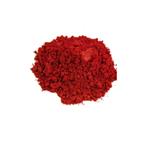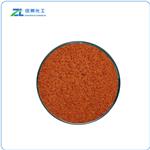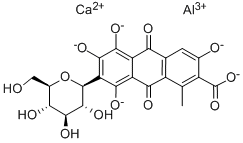Carmine: Sources and Allergy in Urticaria Patients
Carmine is a dye that's found in some food products to create a red color. The food colorant is also called cochineal extract, which comes from the insect species Dactylopius coccus Costa. These cochineal bugs used to harvest carmine are mainly harvested in Peru and the Canary Islands, where the insects live on prickly pear cacti. Unlike other natural food dyes, like annatto (which comes from the seeds of the achiote tree), carmine is made with crushed insects. The insects are harvested, sun-dried and crushed. They are then put into an acidic solution that produces carminic acid. This creates a very bright red dye that can be altered with the use of borax or other solutions. The pigment that results is carmine extract, and it’s used as a red “natural color” in a range of foods and body products. This is one of the oldest human uses of an insect for natural dye. There are reports that it takes about 70,000 insects to produce just one pound of dye, and we know that even after the colorant is combined with solutions, insect proteins are still present in the dyed foods or body products.

Indigo Carmine Binding to Cu(II) in Aqueous Solution and Solid State
Indigo carmine, the sodium salt of 5,5′-indigodisulfonic acid, is a water-soluble derivative of indigo obtained by introducing sulfonate groups into positions 5 and 5′ of the phenyl rings of indigo. Its structure preserves the indigo chromophore, responsible for the characteristic blue color of these two dyes. Indigo carmine shows great chemical versatility, receiving practical uses in many different areas, such as in analytical chemistry as a redox indicator, in medicine as a diagnostic tool, in the food industry as a coloring additive (E132), in the pharmaceutical industry as a colorant for drugs and food supplements and in the textile industry to color blue jeans and other blue denim. Commercially available disodium 2-(3-hydroxy-5-sulfonato-1H-indol-2-yl)-3-oxoindole-5-sulfonate (indigo carmine, IC, Merck, Darmstadt, Germany), copper(II) nitrate hemi(pentahydrate) (Sigma-Aldrich, St. Louis, MO, USA) and copper(II) chloride dihydrate (Merck) were used as received. For the UV/Vis, EPR and ATR-FTIR experiments, solutions were prepared in Milli-Q H2O, and the pH was adjusted by the addition of HClO4 and NaOH solutions. The samples were kept in the dark until used. Powder samples for the ATR-FTIR experiments were prepared by evaporating the solvent at room temperature from the solution samples. The sample for the EDS analysis was obtained by filtration of the precipitate formed in a 10:10 mmol dm−3 Cu(II):IC solution after being kept at 5⁰C for a week. After filtration, the precipitate was dried in a desiccator.[1]
A full speciation study and structural characterization of the Cu(II): Indigo carmine complexes was carried out in aqueous solution and in the solid state by using FTIR, UV/Vis absorption and NMR spectroscopies, complemented with DFT and TD-DFT calculations. These studies showed that three types of Cu(II)/IC complexes, with 1:1, 1:2 and 2:1 metal:ligand stoichiometries, are formed in aqueous solution and are favored in the pH range 6–7. These complexes are stable over time, and a polymeric arrangement involving repetition of the 1:2 complex unit was proposed to form in the solid state. The DFT and NMR results also reveal that antiferromagnetic coupling occurs between the two metal centers of the 2:1 complex observed in aqueous solution. These results are anticipated to provide crucial structural data relevant for subsequent studies of the physiological effects of the IC food dye. These studies will certainly be important in determining the origin of the reported side effects related to exposure to Indigo carmine.
Carmine allergy in urticaria patients
Carmine or less concentrated cochineal extract (E120, Natural Red 4, colour index No. 75470) is a natural red dye obtained from dried bodies of female Dactylopius coccus insects, commonly used in cosmetics, food and pharmaceutical industries. According to the European Food Safety Authority (EFSA), cochineal contains approximately 2–4% of carminic acid only, while commercial carmine used in the industry contains at least 50% of carminic acid. Protein impurities coming from insects may be responsible for IgE-dependent allergic reactions and contact allergy symptoms. As neither the Food and Drug Administration (FDA) nor the EFSA has set limits on carmine protein impurities, in practice their content varies and can be as high as 25% depending on the manufacturer. Ohgiya et al. used sera from patients with anaphylaxis and identified the 38 kD protein CC38K as the main allergen.[2]
This is the first study on carmine hypersensitivity in Poland using skin prick tests and sIgE level measurement. Our study shows a significant number of patients with carmine allergy (8%) in urticaria cohort, all of them with CIndU, while one-third of them had coexisting CSU. This shows the complexity of urticaria and its exacerbations. Carmine allergy in urticaria is more common than it was previously suspected, especially in patients with atopy and systemic symptoms in the course of chronic inducible urticaria. In diagnosing hypersensitivity to carmine, particular attention should be paid to reactions occurring after indigestion of fruit yoghurts, coloured sweets, kebabs and other meats. As the first allergic symptom can be anaphylaxis, it is worth considering whether avoiding it both in the diet and in cosmetics in E120 sensitive patients is optimal. A skin prick test and the sIgE evaluation combined with a detailed medical history focused on the culprit foods seem to be helpful diagnostic tools in determining hypersensitivity to carmine in urticaria patients.
References
[1]Braz S, Justino LLG, Ramos ML, Fausto R. Indigo Carmine Binding to Cu(II) in Aqueous Solution and Solid State: Full Structural Characterization Using NMR, FTIR and UV/Vis Spectroscopies and DFT Calculations. Molecules. 2024 Jul 7;29(13):3223. doi: 10.3390/molecules29133223. PMID: 38999176; PMCID: PMC11243005.
[2]Sadowska B, Sztormowska M, Gawinowska M, Che?mińska M. Carmine allergy in urticaria patients. Postepy Dermatol Alergol. 2022 Feb;39(1):94-100. doi: 10.5114/ada.2020.100821. Epub 2020 Nov 13. PMID: 35369613; PMCID: PMC8953891.
Lastest Price from Carmine manufacturers

US $100.00/KG2025-04-21
- CAS:
- 1390-65-4
- Min. Order:
- 1KG
- Purity:
- 99%min
- Supply Ability:
- 50tons

US $79.00-38.00/kg2025-04-21
- CAS:
- 1390-65-4
- Min. Order:
- 1kg
- Purity:
- 99%
- Supply Ability:
- 20ton


